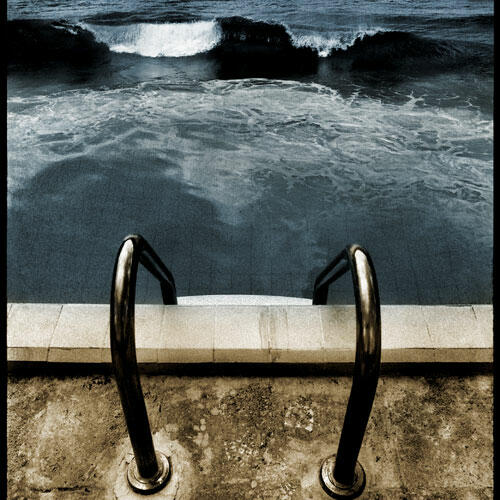Rogelio López Marín (Gory)
Farside, Miami
The exhibition Rogelio López Marín (Gory): Selected Photographs 1984-1994, permits a recapitulation of a crucial moment in contemporary Cuban art through an impeccable selection of this author’s most emblematic series, included in the Liza and Arturo Mosquera Collection.
It is important to situate these images as elements of change, and undoubtedly of rupture, within the panorama of Cuban photography which was shown − with slight variations − en bloc, from the lethargy of a descriptive and paradigmatic documentary practice, prone to reflect a reality ideologically conditioned by the triumphant social process.

Series such as Es sólo agua en la lágrima de un extraño (It’s only water in a stranger’s tear) (1986) or 1836-1936-1984 (1987), privilege subtlety and metaphor over the triumphalist extroversion of the photography of the 1960s and the reinterpretations of the everyday produced in the 1970s. Gory avoids the redundancy of the document, creating a meta language based on photography; a discourse that draws upon painting and its aestheticism, and that expands its project to the poetic text as the key to the work and its conceptual resource.
Es sólo agua proposed a timely re-examination of the established models of perception, and consequently, of representation of the real, opening them up to multiplicity and heterogeneity. Gory superimposed several negatives in order to create − from a close-up that remains constant − an infinite number of possible realities. Pool ladders − the leit motiv of the series − become the vanishing point through which the viewer gains access to those alternate worlds now legitimized by the power of the photographic. Thus, he opened a passage towards an intangible and still little explored area of representation, creating over the course of his oeuvre, the poetic imaginary of a space that glides along the border between dream and reality. This vision transcended the local, and situated his artistic work in a line of research that dates back to Eugéne Atget and his urban recordings, but also to Magritte and his conceptual legacy.
In Ausencias (1980-1991), Gory takes the image from the public space of the socialist epic to the introspective sphere of an authorial ideology. Perhaps as a form of rejection of the hegemonic iconography that preceded them, his photographs elude the human presence and with it all possibility of heroic staging of the subject, which was the customary representation. And still, Ausencias invokes man in a dialogue that flows like the revelation of a dispersed yet ubiquitous self-conscience, in the discursive ruins of memory and time. It is a poetics of the human beings that speaks to us through his traces, based on an archeology of his absence.
It is impossible to understand photography in Cuba without taking into account the contributions that these series introduced. They undoubtedly opened a profound gap in the archives of representation, and not precisely because photography − re-worked and manipulated − should have renounced to its documentary function. In Gory’s world, in his dreamlike evocations, or in the sphere of memories and of the absence these images produce, there is always in the first lines of the sub-text, an underlying halo that is as real − as documentary, one might say − as it is imaginary: a world sprinkled with the quiet melancholy of those years of disenchantment; the uncomfortable scent of a utopia which would hardly have been possible. Or as the poem by Michael Ende which accompanies the photographs in their composition, leading them by the hand like a blind person’s guide, cries out: “Like a swimmer who has gotten lost under a layer of ice, I look for a place to emerge.”
-
 From the series/de la serie Es sólo agua en la lágrima de un extraño, 1986. Toned gelatin silver print, 20 x 16 in. Text by Michael Ende. Credit and courtesy of the artist. Plata sobre gelatina con virajes químicos, 50,8 x 40,6 cm. Texto de Michael Ende. Crédito y cortesía del artista
From the series/de la serie Es sólo agua en la lágrima de un extraño, 1986. Toned gelatin silver print, 20 x 16 in. Text by Michael Ende. Credit and courtesy of the artist. Plata sobre gelatina con virajes químicos, 50,8 x 40,6 cm. Texto de Michael Ende. Crédito y cortesía del artista




